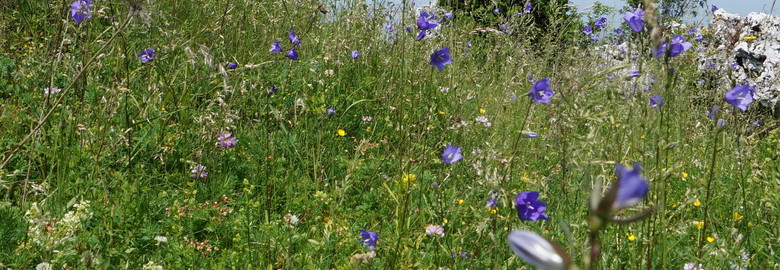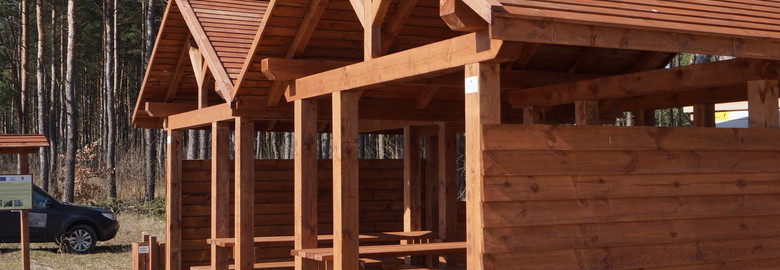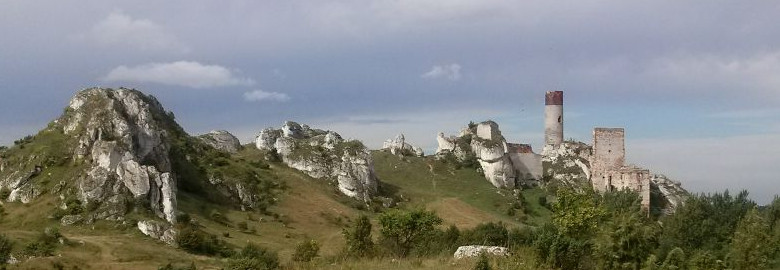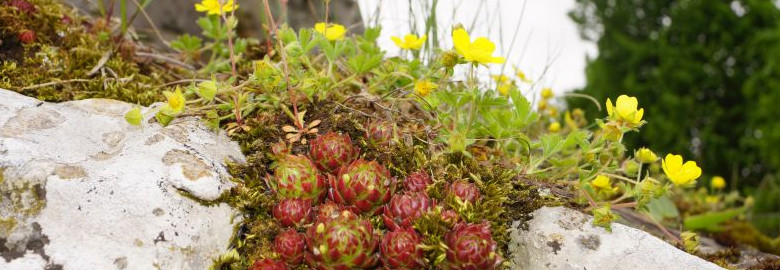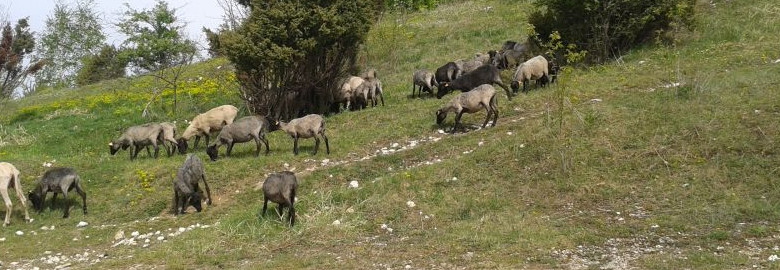Liczba wizyt
Project concluding cenference already behind us ...
Spring is the time when nature wakes up after winter. The temperature is rising, the snow is melting, everything around becomes green. The same thing happens in the case of xerothermic grasslands, which come back to life as soon as it gets warm. The fact that the concluding conference for the project LIFE11 NAT/PL/432 “Protection of valuable non-forest habitats typical of the Eagles’ Nests Landscape Park” was organized in the springtime not only enabled the guests to see the distinctive landscape of the Kraków-Częstochowa Upland, but also to acquaint themselves with the floristic and faunistic richness of this region.
The conference was held on April 18-20, 2016 in the holiday resort “ORLE GNIAZDO HUCISKO” in Hucisk, near Włodowice – a small town situated in the central part of the Eagles’ Nests Landscape Park.
On the first day we invited our guests to participate in two paper sessions devoted to the issues concerning the implementation of the LIFE Project. At the conference opening the Director of the Silesian Voivodship Landscape Parks Complex – Jan Lamch greeted the guests and thanked them for their numerous attendance. Afterwards, he introduced Professor Barbara Tokarska-Guzik, who led the first paper session.
The first paper session included 4 presentations:
- Mr. Artur Wronka (Silesian Voivodship Landscape Parks Complex) talked about the assumptions of the project LIFE11 NAT/PL/432 and the steps taken by the Silesian Voivodship Landscape Parks Complex in order to protect valuable non-forest habitats in four Natura 2000 refuges in the years 2012-2016;
- Ms. Marta Wronka (National Fund for Environmental Protection and Water Management) discussed the LIFE financial instrument as the only EU financial instrument focusing exclusively on co-financing the projects related to environmental and climate protection;
- Mr. Tomasz Kucharski (Mayor of Olsztyn Municipality) delivered a speech on the benefits of the removal of tree and shrub saplings, the introduction of grazing, engaging in educational and promotional activities, as well as activating the local community, all of which the Olsztyn Commune had achieved in the process of the project implementation in the most environmentally valuable areas;
- Mr. Andrzej Mikulski (Mayor of the Town and Commune of Ogrodzieniec) discussed the benefits of the removal of tree and shrub saplings, the introduction of grazing, the construction of rest stops for tourists, the replacement of anchor points on rocks, engaging in educational and promotional activities, as well as activating the local community, all resultant from the implementation of the project in the commune.
After the lunch break the second paper session, led by Dr. Hab. Beata Baczyńska Sendek, was held. During the session the speakers delivered 4 presentations concerning the project LIFE11 NAT/PL/432 and 2 presentations which defined the essential assumptions of the LIFE projects executed by other beneficiaries. The presentations focused on the following issues:
- Ms. Beata Fąfera (District Center for Agricultural Consulting in Zawiercie) delivered a speech on the role of animal husbandry in the shaping of the landscape of the Kraków-Częstochowa Upland;
- Ms. Barbara Majchrzak (Jan Długosz Academy in Częstochowa) analyzed the characteristics of xerothermic grassland clusters with regard to their floristic richness;
- Mr. Cezary Gębicki (Jan Długosz Academy in Częstochowa) discussed xerothermic grassland clusters in the context of their faunas;
- Ms. Barbara Tokarska-Guzik (University of Silesia in Katowice) discussed in detail one of the tasks to be completed within the framework of the project, its aim being the removal of the invasive, alien species – the Sakhalin knotweed;
- Mr. Jakub Kałużny (Regional Directory for Environmental Protection in Cracow) talked about the implementation arrangements of the Project “Protection of xerothermic habitats in the Natura 2000 areas in the Miechowska Upland”;
- Mr. Paweł Baranowski (WestPomeranian Board of Land Reclamation and Water Facilities in Szczecin) presented the implementation arrangements of two LIFE projects: “Creating a Blue Wildlife Corridor in the Rega Basin” and „Creating a Blue Wildlife Corridor in the Ina Basin.”
On the second day of the conference a field session was held. It concentrated on the effects of the actions taken for active environmental protection. The conference participants took a trip by bus to the most valuable and picturesque spots of the Kraków-Częstochowa Upland. During the journey Mr. Paweł Kokoszka, a SVLPC employee and a Jurassic guide, acquainted his listeners with numerous interesting facts about the region. The project employees, Ms. Milena Ziętek and Mr. Piotr Niedbał, presented the effects of active protection:
- on the Kromołowiec Hill (Łazy Commune) – the removal of tree and shrub saplings with the rootstocks, the introduction of grazing, the replacement of anchor points on rock outliers and the construction of tourism infrastructure;
- in the Wodąca River Valley (Pilica Commune and Wolbrom Commune) – the removal of the invasive species, namely the Sakhalin knotweed, the removal of tree and shrub saplings, the replacement of anchor points on rock outliers and the construction of tourism infrastructure;
- in Olsztyn near Częstochowa (Olsztyn Commune) – the removal of tree and shrub saplings and the introduction of grazing. Additionally, the participants had the opportunity of visiting the ruins of the Royal Castle in Olsztyn with a guide (representative of the Company for the Management of the Olsztyn Land Community).
On the third day the concluding part of the conference and a poster session took place. In the course of the latter, the beneficiaries executing other LIFE projects could share their experiences with the audience and talk about the background of the implementation of their projects. On this day the Vice-Marshal of the Silesian Voivodship, Mr. Stanisław Dąbrowa, honored us with his presence. The concluding part of the conference, led by Professor Aleksander Herczek, was a wonderful opportunity for an exchange of views and opinions on the actions taken for active environmental protection within the framework of the Project. During the discussion, it was unanimously agreed that our Project contributed substantially to the protection of the biggest environmental and landscape values of the Kraków-Częstochowa Upland.
We would like to thank all of the conference guests, speakers and staff.
Zał.1 - Opening of the conference by the Director of the SVLPC - Mr. Jan Lamch
(First day of the conference)
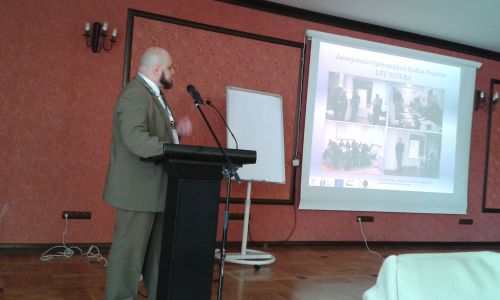
Zał.2 - Projekct LIFE11 NAT/PL/432 in a nutshell. Presentation of the assumption
of the Project and the backgroung of its implementation by the LIFE Jura
Section Manager, Mr. Artur Wojtasik
Zał.3 - Description of LIFE financial mechanism, MS. Marta Wronka (National Fund
for Environmental Protection and Water Management)
Zał.4 - What the Jurassic commune gained owing to Ptoject LIFE11 NAT/PL/432 ?
Mr. Tomasz Kucharski (Commune Office of Olsztyn)
Zał5 - Conference participants during the indoor part
Zał.6 - Field part - Kromołowiec Hill in Niegowonice (Second day of the conference)
Zal.7 - Time for photographers ...
Zał.8 - Task presentation: replacement of anchor points
Zał.9 - Coffee break, Smoleń
Zał.10 - Time for relax ...
Zał.11 - ... Let1s go out into the field
Zał.12 - Walk through Wodąca River Valley
Zał.13 - We discover picturesque spots in the Kraków - Częstochowa Upland
Zał.14 - Invasive and alien "problem" in our project - the Sakhalin knotweed.
How to fight it ?
Zał.15 - Further down the Jurassic trail
Zał.16 - Presentation of the removal of tree and shrub saplings and the replacement
of anchor points for climbers in the Zegarowe Rocks area
Zał.17 - Visiting the Jasna Strzegowska Cave in the Zegarowe Rocks
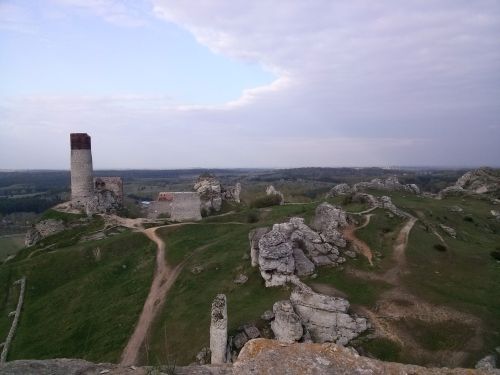
Zał.18 - Royal Castle in Olsztyn - the last point of our field session
Zał.19 - Presentation of the management of sheep grazing, Olsztyn
Zał.20 - Time for photographers again ...
Zał.21 - "Field Kitchen" Olsztyn
Zał.22 - Outdoor hot meal before continung the field session
Zał.23 - Visiting the Royal Castle with a guide
Zał.24 - We admire and get to know the Jurassic rosky landscape
Zał.25 - Field part, continuation
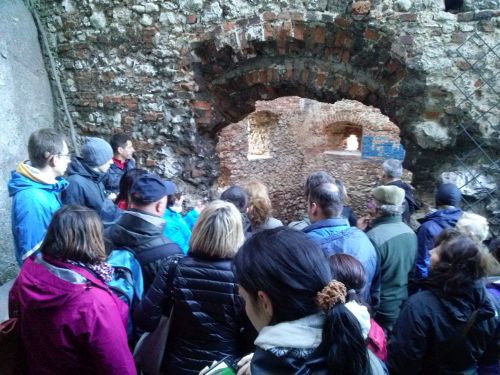
Zał.26 - Legends, mesteries and interesing facts ...
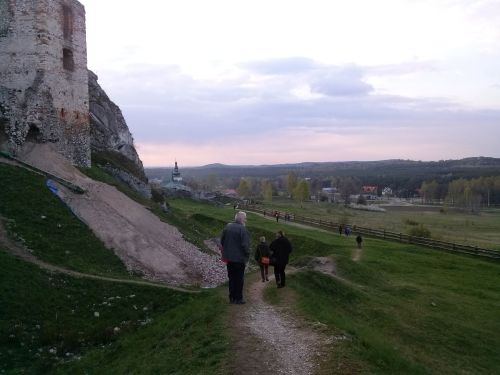
Zał.27 - It`s the end of our trip ...
Zał.28 - Poster session and conclusion (third day of the conference)
Zał.29 - Did the implementation of the Project contribute to the improvement
of the environmenat and landscape values of the Krakoów Częstochowa
Upland ? (panel discussion)
Zał.30 - Summing up of the Project implementation
by the Section Manager - Mr. Artur Wojtasik
Zał.31 - Speech by the Marshal of the Silesian Voivodenship,
Mr. Stanisław Dąbrowa
Zał.32 - Speech by the Director of the Silesian Voivodship Landscape Parks Complex,
Mr. Jan Lamch - conclusion of the three-day confarence



